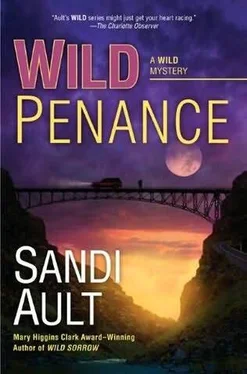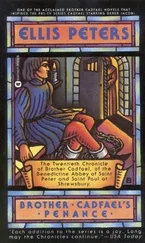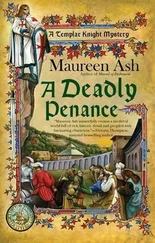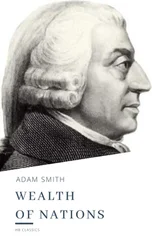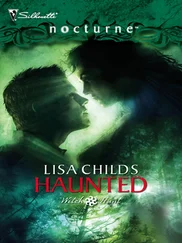La Arca held seven rosaries made with hand-carved wooden beads; each one had an ornate crucifix. And there was one large, silver cross with three transoms, the shortest one nearest the top, each of the next two successively longer. At the crux of the second transom was a large ruby. I set these things on the table also.
Beneath that lay a sheaf of yellowed papers. I handled them carefully. Several of them were folded and sealed with wax, and they were so old and brittle that tiny bits of them chipped off the edges and fell into the box as I moved them. They would have snapped apart if anyone tried to open them.
One item interested me, though, and I took great pains not to damage it. It was a small, handwritten ledger, its cover crudely hand-stitched from plain tan cloth, with only a few sheets of thick yellow paper inside. It appeared to be a kind of log, with over a hundred Hispanic names, each one with a year following. A few of them had the word muerto written after the year.
More papers, all in Spanish, many of which looked to be official documents that bore an impressed seal, sworn to in both elegant and crude handwriting, some witnessed with simple X marks, others with flamboyant signatures. A name among the signatures on one document caught my eye: A. Vigil . Where had I seen that name? There were hundreds of Vigils in northern New Mexico. I could have seen it on an election billboard or a mailbox, anything. Still, it haunted me. I looked through more of the pages. There it was again: Antonio Vigil . This time, it was not a signature, but a document that contained the name over and over again-something about crimen colérico -an angry crime. And another name, Arturo Vigil .
I heard the bathroom door open and Kerry’s voice called to me: “I’m just letting the steam out. Find anything important?”
“Still looking. I wish I knew more Spanish.” I shook my head. I could smell Kerry’s shampoo, hear him brushing his teeth. I carefully set all the papers on the table.
At the bottom of the box, I found what I was searching for. It was wrapped in a piece of crimson silk. I carefully unfolded the cloth and regarded the precious treasure within. In large, ornate black script, the title read, El Instituto Religioso de la Santa Hermandad . There were exquisite, block-cut, embellished letters at the beginning of each paragraph, and the printing on the yellow-gold parchment pages was antiquated and irregular. A hand-colored illustration of a man on his knees whipping himself bore the title Imitación de Cristo . The tract by Padre Martínez! It does exist! Here it is! I scanned it, handling it with the utmost delicacy, shaking my head back and forth in disbelief. Then I carefully returned the priceless prize to its protective silk wrapping and set it on the table.
La Arca was now empty. I closed the lid and stood up. Then I gently turned the box over. On the bottom, carved into the wooden base, was the signature of its maker and the date it was made: Pedro Antonio Fresquíz-1831 .
At the library, I had learned about the santero from Las Truchas, probably the first native-born santero in Nuevo Mexico. As Father Ignacio had promised, this man-the one from the legend Theresa Mendoza had told me-and the sacred tract by Padre Antonio José Martínez, who was the first New Mexico Penitente to become a priest, had come together at last. Padre Martínez had virtually risked his life to defend Los Hermanos against the decrees the Church issued condemning the brotherhood when he printed this sacred document. This tract was his opus, and that source of power Father Ignacio had mentioned that someone had been trying to steal from Los Penitentes. It was their credo. And this sacred ark was probably the last work of art Pedro Antonio Fresquíz had made before he died. Its value alone-without the tract by Padre Martínez-was inestimable. Only a few pieces of his work remained in existence, and their distinctive style was prized by collectors of religious iconography the world over.
I rotated La Arca back to an upright position and studied the beautiful, passionate carving, the deep, stainlike colors of the cedar wood’s variegations on the lid of this portable shrine. I began to replace the contents, one by one-beginning with the Martínez tract in its silk cover. Then the aging documents and the cloth binder with its ledger of names. Then the silver cross with the ruby, and the carved-bead rosaries with their crucifixes. And the priceless cuaderno.
I turned then to the piles of photographs. I had seen photos like these in some of the books I had looked to for research into the brotherhood. Sadly, most of them were overexposed, not very clear, taken from a distance-showing Penitente rituals and processions. And even a few of crucifixions.
The figures in the older pictures seemed unreal. The stark light of New Mexico’s midday sun shone on the harsh faces of rocks, making the black-clad figures in coats appear to be shadows, and the black-hooded, white-trousered Penitentes hard to make out against the strata and the bare ground.
The newer photographs, those with the rickrack edges, were clearer. There were several of the ritual reunion of Christ with his mother. There was a series showing the stations of the cross. Many of processions. And eight pictures in sequence of the same crucifixion. They looked like they were hastily shot, the frames not well composed, some of them askew. They were taken from a considerable distance-probably in secret, from behind a rock-and then seized later. A few onlookers, also dressed in black, appeared in several of this series, tiny and hard to make out. I scanned these. Then I saw the face.
It was a face I had seen in countless photographs, a face that, surprisingly, had remained very similar over the years.
I quickly began to unpack La Arca again. I removed the cuaderno-and the rosaries and silver cross-looking for what was beneath them. There! I picked up the cloth-bound ledger and scanned the most recent dates. I found what I was looking for: Arturo Vigil, 1954-muerto .
“Kerry, get ready, okay? I have to go.” I carefully restored to La Arca all her treasures. All but one.
The Shrine
I asked Kerry and Jerry Padilla to wait at the bottom of the drive. “Promise me you’ll wait here for my signal.”
“I don’t feel right about it, Jamaica,” Padilla said. “How do I know you’ll be safe?”
I pulled my Sig Sauer pistol from its holster. I held it up to the deputy and raised my eyebrows at him. Then I tucked the pistol into one big pocket of my jacket, the photo into another. I patted my gun pocket. “I don’t think I’ll need this, but just to reassure you…”
I walked up Regan’s drive. The Toyota was in the garage. I went to the house and looked in the windows. No sign of life. I peered up the path to the casita. The Land Rover was not there, of course. There were big boot prints in the drifts leading from the rear portal up the slope toward the shrine. I followed them, crunching softly in the snow as I walked.
I could hear her voice as I approached. She was crying and groaning and singing under her breath, all at the same time. I came up the high side of the rocks and looked down at her back, her head draped in a black lace mantilla, which settled in folds onto her thick sweater. She was wearing some kind of soft pants and the same unlaced boots she always wore around the place. “Regan,” I said, my voice firm.
She turned around slowly. Before her, on the shrine, lay the rosary I had found by the corral-the one with the crucifix with the name A. Vigil engraved on the back. A dozen or so lit candles in red and green glass jars surrounded the wooden piece and a carved santo-Saint Anthony.
Читать дальше
